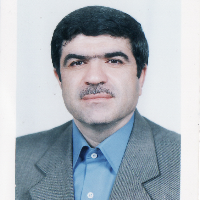Application of the Box-Behnken Design for Optimizing Biodiesel Output from Castor Oil: Analysis and Characterization
Author(s):
Article Type:
Research/Original Article (دارای رتبه معتبر)
Abstract:
This study specifically examines the process of producing and analyzing biodiesel made from castor oil using base-catalyzed transesterification. The catalyst used in this process is potassium hydroxide (KOH), and the methanol (CH₃OH) used has a purity of 99.9%. The biodiesel obtained was analyzed extensively to assess its quality. The characterization techniques employed were Gas Chromatography (GC) for compositional analysis, Flash Point measurement for safety assessment, Kinematic Viscosity evaluation for flow properties, and Density determination for mass-volume relationships. To perform a statistical analysis, the Response Surface Method (RSM) was employed to determine the optimal conditions that would yield the highest rate of biodiesel production among the potential solutions. This study focused on three key variables affecting the transesterification process: ultrasonic duty cycle (using a 24 kHz ultrasonic method varying the duty cycle from 20% to 100%), ultrasonic amplitude (varying from 20% to 100%), and reaction time (spanning from 10 to 15 minutes). This investigation achieved a biodiesel yield of 88.38% using a 60% ultrasonic amplitude, a single ultrasonic cycle, and a 15-minute reaction time. The regression model developed can be used to predict biodiesel's percentage conversion.
Keywords:
Language:
English
Published:
Biomechanism and Bioenergy Research, Volume:3 Issue: 1, Winter and Spring 2024
Pages:
94 to 107
https://www.magiran.com/p2729952
سامانه نویسندگان
مقالات دیگری از این نویسنده (گان)
-
Predicting Greenhouse Microclimatic Parameters Using a Deep Learning Algorithm
Hajir Ein Ghaderi, Reza Alimardani *, , Mohammad Hosseinpour-Zarnaq
Iranian Journal of Biosystems Engineering, -
The Use of Gradient Boost Regression Model to Modeling of Gas Sensors in Diagnosis of Sun-dried, Sulphurous and Acidic solution dried Raisins
Mohammad Ghoushchian, *, Shahin Rafiee
Iranian Journal of Biosystems Engineering,



